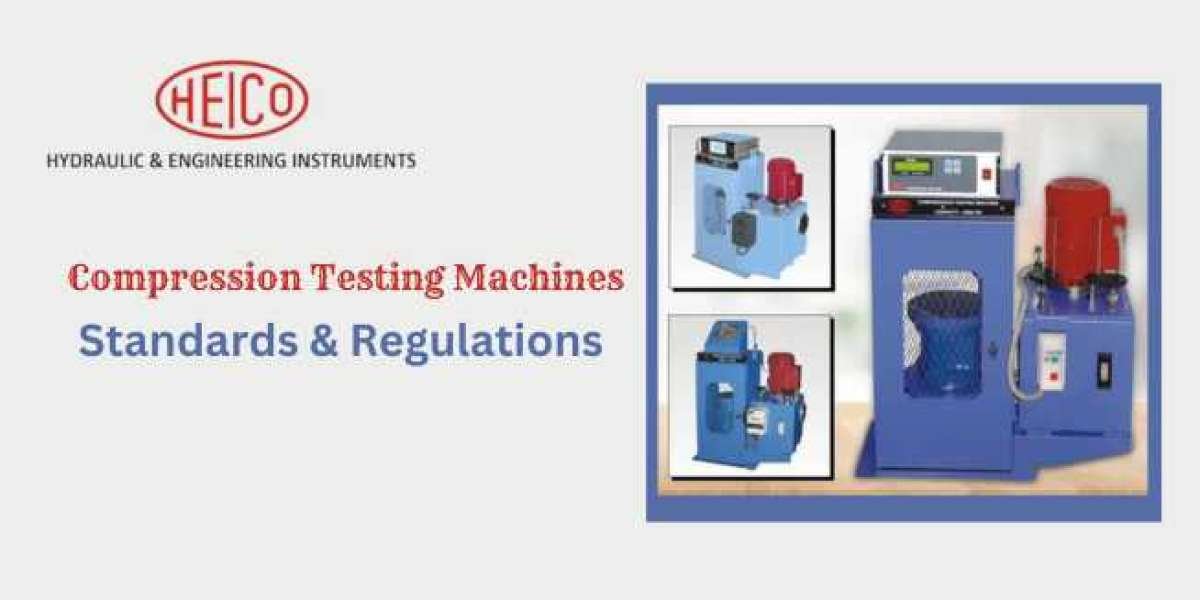In the world of material testing, compression testing machines play a crucial role in determining the strength and durability of various materials. These machines are used to apply controlled force to a specimen, measuring its response to compression. To ensure accurate and reliable results, it's essential to adhere to specific standards and regulations.
Let's delve into the key standards and regulations that govern the use of compression testing machines.
Importance of Standards and Regulations
Adhering to standards and regulations ensures that the testing process is consistent, reliable, and comparable across different laboratories and industries. It also guarantees the safety and performance of the materials being tested.
Compression testing machines must comply with these standards to provide valid results that can be trusted for quality control, research, and development purposes.
Key Standards for Compression Testing Machines
1. ASTM Standards
The American Society for Testing and Materials (ASTM) has established several standards for CTM machines . These include:
- ASTM E4: This standard specifies the requirements for the calibration of force-measuring systems used in testing machines. It ensures that the force applied during compression tests is accurate and consistent.
- ASTM E9: This standard covers the methods for conducting compression tests of metallic materials at room temperature. It provides guidelines on specimen preparation, testing procedures, and data interpretation.
2. ISO Standards
The International Organization for Standardization (ISO) also has important standards for compression testing:
- ISO 7500-1: This standard specifies the calibration and verification of the force-measuring systems of testing machines. It ensures that the machines operate correctly and provides accurate measurements.
- ISO 604: This standard outlines the methods for determining the compressive properties of plastics. It includes guidelines for specimen preparation, testing conditions, and result interpretation.
Regulations Governing Compression Testing Machines
Regulations for compression testing machines ensure that the equipment meets safety and performance criteria. These regulations often vary by country but share common goals of ensuring accuracy, reliability, and safety.
1. Calibration and Maintenance
Regular calibration and maintenance are critical for ensuring the accuracy of compression testing machines . Many regulations require periodic calibration by certified technicians to maintain the precision of the force measurements. Proper maintenance ensures the longevity and optimal performance of the machines.
2. Operator Training
Regulations often mandate that operators of compression testing machines receive proper training. Skilled operators can correctly set up tests, interpret results, and maintain the equipment. This minimizes errors and enhances the reliability of the testing process.
3. Safety Standards
Safety is a paramount concern when operating compression testing machines . Regulations may include guidelines for safeguarding operators and ensuring that the machines have safety features to prevent accidents. These might involve emergency stop buttons, protective shields, and regular safety inspections.
Compliance and Certification
Compliance with standards and regulations is often verified through certification processes. Laboratories and companies using compression testing machines may seek certification from recognized bodies to demonstrate their adherence to industry standards. This certification can enhance their credibility and assure clients and stakeholders.
Conclusion
Compression testing equipment is an indispensable tool in material testing, and adherence to standards and regulations is crucial for ensuring accurate, reliable, and safe testing processes.
By following ASTM and ISO standards, maintaining proper calibration, and ensuring operator training, you can achieve the highest levels of performance and reliability in your compression testing endeavors.
Thank you for your interest in understanding the standards and regulations of compression testing machines . For more information or to explore a range of testing equipment, feel free to contact us @ +91 88268 98490 .
Also read: Challenges and Common Issues in Compression Testing Machines













